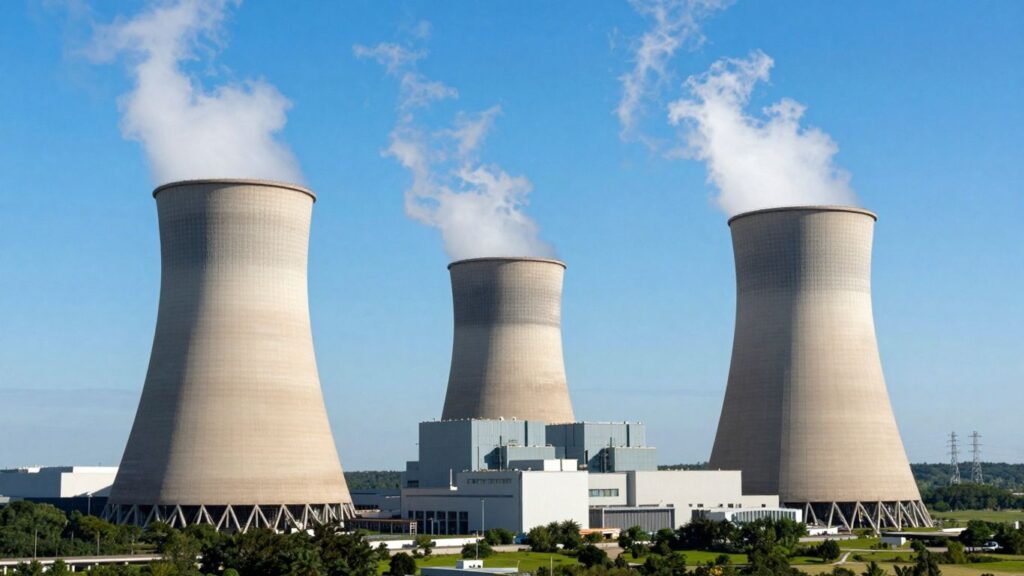China has achieved a significant milestone in nuclear power with its experimental 2 MW Thorium Molten Salt Reactor (MSR) in the Gobi Desert, successfully refueling it without shutting down. This breakthrough highlights thorium’s potential as a safer, more efficient, and cleaner alternative to traditional uranium-based nuclear energy, with global research efforts gaining momentum.
Key Takeaways
- China’s experimental Thorium Molten Salt Reactor (MSR) successfully refueled while operational, a first for this technology.
- Thorium reactors offer inherent safety advantages, reduced radioactive waste, and no weapons-grade byproducts.
- Thorium is more abundant than uranium and can be mined more easily.
- India is also a major player in thorium research, aiming to expand its nuclear capacity.
- Global research, including efforts coordinated by the IAEA, is exploring thorium’s potential.
China’s Groundbreaking Achievement
China’s experimental 2 MW Thorium Molten Salt Reactor (MSR) has demonstrated a critical capability: refueling without interruption. This feat, achieved in the Gobi Desert, marks a significant advancement for thorium-based nuclear power. Unlike conventional reactors that use solid uranium rods, this MSR design dissolves thorium fuel in molten salt, which acts as both the fuel carrier and coolant. This design inherently mitigates meltdown risks, as the fuel is already molten, and any leak would result in the fuel solidifying rather than causing a steam explosion.
The technology, initially explored by the U.S. in the 1950s but abandoned due to its unsuitability for weapons-grade material production, has been advanced by China. The Shanghai Institute of Applied Physics, leveraging declassified U.S. research, has pushed the technology forward, with their reactor going critical in October 2023 and reaching full power by June 2024.
Advantages of Thorium
Thorium offers several compelling advantages over uranium. It is three to four times more abundant in the Earth’s crust and is often mined as a byproduct of rare earth elements. Thorium-232, while not fissile itself, can be converted into fissile uranium-233 when irradiated with neutrons. This process can generate more fissile material than it consumes, potentially offering a long-term energy solution. Furthermore, thorium reactors produce less long-lived radioactive waste and do not generate weapons-grade byproducts, enhancing non-proliferation and waste management.
Global Interest and Research
While China has taken the lead in operational deployment, other nations are actively pursuing thorium research. India, possessing the world’s largest thorium reserves, has a long-standing nuclear roadmap focused on utilizing thorium, aiming for 100 GW of nuclear capacity by 2047. Institutions like the Bhabha Atomic Research Centre (BARC) are leading R&D efforts for thorium deployment within the next decade.
Globally, research institutions and companies are exploring thorium MSRs. The International Atomic Energy Agency (IAEA) is coordinating international research to assess thorium’s potential across various reactor designs. Projects like the Salt Irradiation Experiment (SALIENT) in the Netherlands are investigating cleaner reactor fuels and materials for reactor construction, building on past research from Oak Ridge National Laboratory in the U.S.
Challenges and Future Outlook
Despite its promise, challenges remain. The extraction of thorium can be more costly than uranium, and research and development for thorium-powered installations require significant investment due to limited experience. Thorium also requires a ‘driver’ like uranium or plutonium to initiate and sustain a chain reaction. However, with growing energy demands and climate objectives, thorium is increasingly viewed as a viable and attractive option for sustainable nuclear energy. The progress in China and India, coupled with ongoing global research, suggests a potential new dawn for thorium reactors.












